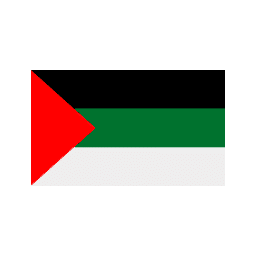Select Country









What product is right for you?
If you are not sure what to look for? Do not worry! We can help you with questions you might have about our products.

Corn was first domesticated by native peoples in southern Mexico about 10,000 years ago. The first appearance of corn in the history of European agriculture coincides with the discovery of America, when Christopher Columbus, returning from his first voyage, mentioned this new cereal referred to by the indigenous people of the island of Cuba as “Mahiz”. Since its introduction in Spain in 1943, corn spread quickly to other European countries and then to Africa and Asia. Nowadays, corn is a staple food in many places.
Corn (Zea Mais) is belonging to the grass family. It is a species endowed with remarkable polymorphism especially as regards the shape and composition of the kernels. Based on this last aspect, cultivated corn can be divided into 7 groups: Zea mays indentata (dent corn); Zea mais indurata (flint corn); Zea mays amilacea (flour or soft corn); Zea mais saccharata (sweet corn); Zea mais everta (popcorn), Zea mais ceratina (waxy corn); Zea mais tunicata (pod corn). The dent corn type is by far the most cultivated in the world.
Corn is an annual plant, with a single, stout, erect and solid stem. The apex of the stem ends in the tassel, the male inflorescence; while the female inflorescence is an ear placed at the axil of the leaves. Corn, like that of all grasses, has a fasciculate root system and therefore quite superficial even if it can reach more than 2 meters deep.
The large narrow leaves have wavy margins and are spaced alternately on opposite sides of the stem. Corn grain is an indehiscent fruit called kernels.
The life cycle of the maize plant can be divided into three different, well-differentiated phases:
90% of corn production is concentrated in the northern hemisphere and largely between the 35th and 45th parallel, the further north the temperature is generally insufficient, the further south the water is the limiting factor. The optimum temperature for corn is between 24 and 30 ° C (75.2 – 86 °F). Temperatures above 32-33 ° C (89.6 – 91.4 °F) are always harmful and below 10 ° C (50 °F) the development of the plant stops.
Corn prefers medium-textured, deep, well-drained soils rich in organic matter. The sowing time varies from region to region but the factor that more than any other influences the choice of the sowing time is the temperature of the soil. In fact, corn does not germinate below 10 ° C (50 °F), it germinates slowly at 12 ° C (53.6 °F) while at 15 ° C (59 °F) germination is rapid, and the plant emerges from the ground in about 10 days.
Fertilization has the aim to satisfy the nutrient needs of the crop and avoid the impoverishment of soil fertility, without however causing harmful overloads of nutrients in the environment which would cause pollution and a unitary loss also at an economic level for the farmer.
Corn is notoriously a crop with a high production capacity and therefore with high needs for nutritional elements. The nutritional elements are largely contained in the soil but often in insufficient quantities for the needs of the crop or combined in compounds that are unavailable for the plant.
Nitrogen is the most important nutrient for the productive result of the crop, the plant’s N needs are increasing until pre-flowering which represents the most critical stage for this element. For phosphorus, the rate of absorption occurs almost in parallel with the growth of the plant, but the initial stages of development represent the most critical period. The absorption of potassium basically ends with the flowering of the plant or shortly after. The other essential chemical elements, including micronutrients, are normally present in the soil in sufficient quantities for the development and regular growth of the plant except for Zinc which must be supplied at sowing or during vegetative growth.
The crop also benefits from the application of products with a biostimulant action, based on beneficial microorganisms and vegetable protein hydrolysates. These products are able to stimulate the emergence and root development in the early stages of seedling development, to improve the availability of nutrients in the soil, to increase the yield from a quantitative and qualitative standpoint, to reduce the negative impact of climatic stresses and to increase the nutrient use efficiency (NUE). The application of biostimulants increases the environmental and economic sustainability of the production system.
(Slow emergence and reduced development of the root system) Our seed treatment strategy is the best solution to start your cultivation. It is the sustainable basis of the entire crop cycle, allows for better germination, increases the resistance of plants to abiotic stresses, the availability of nutrients and the root development. Our seed treatments solutions have polyvalent and high persistence action that stimulate and support the development of the plant throughout the entire crop cycle. COVERON STIM is an innovative biostimulant specifically designed for seed treatment. It is rich in peptides 100% of vegetal origin and contains the exclusive peptide LRPP (Lateral Root Promoting Peptide), that has a strong and direct action on germination and roots development. COVERON is an innovative biostimulant for seed treatment containing different selected, patented, and proprietary beneficial microbials. It is the first commercial formulation combining mycorrhizae and Trichoderma atroviride, also suitable for organic farmig. |
(Soil fatigue and reduced soil fertility) As a renewal crop with high nutritional requirements, which opens the agricultural rotation, corn is considered one of the most suitable plants to better use the benefits of organic fertilization. For this reason, it is important to use organic fertilizers in pre-sowing, capable of improving the physical, chemical, and biological fertility of the soil with a high level of phosphorus, a fundamental element in the early stages of crop development. SONAR 7-15-3 or GUANITO 6-15-3 + 2 MgS are the ideal solutions for the organic fertilization of corn in pre-sowing. SONAR guarantees a great quantity of nutrients during the entire growth cycle of the plant, due to the gradual release of organic nitrogen and phosphorus. It is suitable for fertilization of grains thanks to a favorable ratio between N and P. GUANITO is the organic fertilizer designed to supply a high quantity of organic nitrogen and 100% assimilable phosphorus, also suitable for organic farming. |
Prevent/cure Zinc deficiency Zinc is a very important micronutrient for corn, essential to normal plant growth and development. Zinc deficiency is a common nutritional constraint on corn. The deficiencies of Zinc are not only due to the great need of the crop, but also to several factors that can minimize availability of Zn to corn, like Soil pH higher than 7, difficult growing conditions or antagonism with Phosphorus. Zinc deficiency can strongly compromise corn production, causing limited root development, poor growth, and small leaves/internodes. The most severe symptoms occur on the youngest leaves. Silking and tasseling are delayed and the kernels may be chalky. KEYLAN Zn is an innovative product containing Zinc biochelated to Vegetal peptides. KEYLAN Zn makes Zinc available to the crop even if the environmental conditions are not optimal especially during the early stages of growth. Our exclusive bio-chelation technology can strongly chelate the nutrient and the vegetal peptides perform a biostimulant action increasing tolerance of corn to abiotic stress. |
(Enhance nutrient availability and provide useful bacteria) Nutrients in the soil are often unavailable for plants but specific bacteria are able to solubilize mineral elements and make them available for plant uptake. Besides, vegetal protein hydrolysates can modify the microbiome on plant tissues increasing the microbial biodiversity and especially plant growth promoting bacteria. GLYSS is a new generation plant biostimulant based on the combination of beneficial bacteria and vegetal protein hydrolysates including Plant Stimulating Peptides (PSP) enriched with Lateral Root Promoting Peptide (LRPP). GLYSS is suitable for seed treatment of corn, but it can also be applied as foliar spray with herbicides. Glyss enhancing nutrient availability and providing useful bacteria increases the yield and quality on corn, with positive impact also on soil biodiversity. |
All growers, conventional and organic, have an interest in gaining back the yield potential lost due to abiotic stresses. It’s proven that on the average, farmers can harvest only 50% of the yield potential. The yield gap can be caused by biotic and abiotic stresses with a stronger negative impact of abiotic stresses. In fact, abiotic stresses like heat, cold, salt, drought and flooding caused from 65 to 75% of the yield gap, while biotic stress only 25 to 35%. TRAINER has been shown to consistently help plants better recover from stress events also after herbicide application by increasing antioxidant supply, stimulating antioxidant biosynthesis, and activating antioxidant defense enzymes. PSPs maintained higher photosynthetic activity and a better nutritional status in the shoot tissues leading to a higher crop performance. There are many protein hydrolysate products on the market, however, the composition of the products varies widely. With TRAINER, the concentration of peptides is the key and peptides have high availability to plants because they are in a ready-to-use form. |
Nowadays, sustainable fertilization management is essential to increase the overall performance of cropping systems by providing economically optimum nourishment to the crop while minimizing nutrient losses from the field and supporting agricultural system sustainability by increasing Nutrient Use Efficiency (NUE). NUE is directly linked to the crop yield and generally defined as the yield of harvestable product per unit of nutrient available from the soil and fertilizer. TRAINER containing vegetal peptides, which we called Plant Stimulating peptides, improves NUE by enhancing both the uptake and utilization efficiency of nutrients. For istance, promoting the fine root growth, stimulating root enzymes involved in nutrient uptake, or upregulating genes encoding for enzymes involved in plant assimilation of inorganic nutrients such as nitrates. Foliar application of TRAINER on corn, directly and indirectly improve NUE especially under low nutrient availability. |







